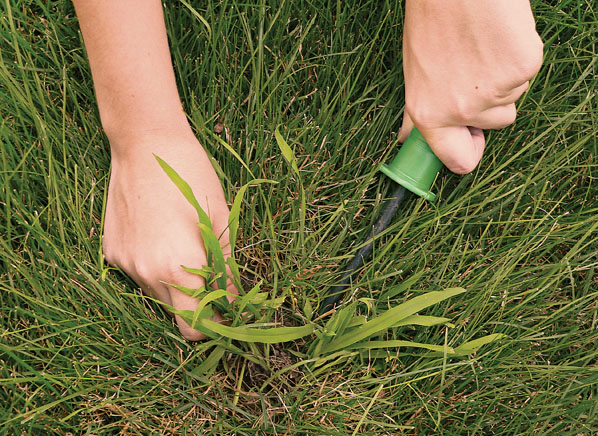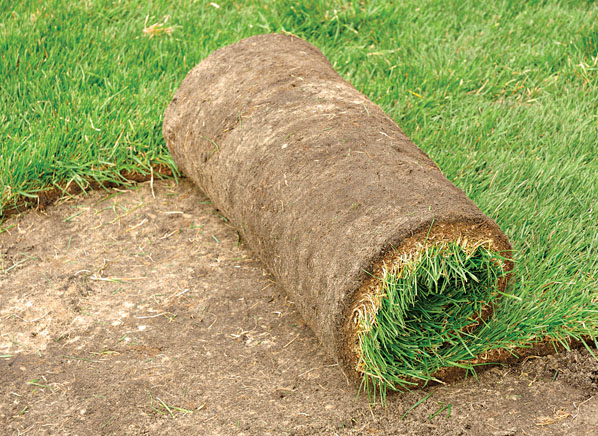If the lawn outside your window is giving you the blues, join the club. After a brutal winter walloped much of the country, our Facebook and Twitter feeds have been buzzing with lawn care woes from exasperated homeowners (#moles #barespots, anyone?). Fortunately, many of the most common problems have fairly straightforward fixes, as you’re about to read. And just in case your yard is already the envy of the block, our experts have advice on money-saving tips, the right and wrong ways to fertilize, plus results from our latest tests of mowers, tractors, and more.
Problem: Lack of sunlight
Solution: Look for lawn alternatives
Even so-called shade-tolerant varieties of turfgrass won’t do well in dark corners of the yard. And pruning trees too aggressively to create sunlight can end up harming the tree. You’re better off cutting your losses and replacing the sun-starved patch of grass with a shade-tolerant ground cover, such as bishop’s hat or sweet woodruff. Or you might convert that part of the lawn with gravel or a perennial bed.
Problem: Crabgrass invasion
Solution: A multi-pronged defense
You’re smart to tackle this pesky weed. Besides being an eyesore, crabgrass typically dies off at the first frost, promoting soil erosion. Applying corn gluten meal, a natural alternative to chemical herbicide, in early spring can help contain the problem. Follow with a spring fertilizer. As the mowing season begins, don’t cut the grass too short, since this can open the door again for crabgrass. Set the deck on your mower or tractor to around 3½ inches. Most decks have notches, not inches, so getting the height just right can take some trial and error.

Problem: Persistently thin, patchy grass
Solution: Get a soil test
Chronic lawn problems are often about the soil, not the actual grass. Having a soil test done is the best $10 to $15 you can spend. Home and garden centers sell DIY kits, but we recommend working with your local cooperative extension (use the national directory listed at www.csrees.usda.gov/extension), whose experts will pinpoint your soil’s pH level and identify any missing nutrients. They’ll also prescribe the best course of treatment, for example spreading limestone if the soil is acidic or sulfur if it’s overly alkaline. It’s prudent to do a soil test every few years, though if you just moved into a new home, you may want to do one annually, at least until the desired results start to show.

Problem: Grub sightings
Solution: First assess, then address
These milky-white beetle larvae feed on grass roots, which can lead to dead spots in the lawn. Grubs also attract moles and raccoons. But a few here or there might not be a problem, says Kyle Wickings, a turfgrass entomologist at Cornell University. Ten larvae per square foot is a common threshold for treatment, however, this can vary by species. A very healthy lawn can tolerate higher densities.
If there are signs of damage, say dead or wilting turf, ask your cooperative extension for the best treatment, which will depend on the species of grub. Preventive insecticides are applied in spring, and curative measures are done in the fall. In some regions, chemicals are illegal or must be applied by a certified pro. Organic alternatives, such as Heterorhabditis nematodes, are often effective.

Problem: Ugly bald spots
Solution: Start from scratch
Weeds love bare patches, so if you don’t act quickly, they will. Spring’s cool, wet weather is conducive to growing many types of turfgrass. Start by digging up the damaged section, plus 6 inches of surrounding, healthy lawn, cutting about 2 inches deep. Then level the soil and add a small amount of soil amendment, such as a plant-based compost, and starter fertilizer. If you’re using seed, cover it lightly with straw and keep the ground moist until germination. For sod, which is about 10 times more expensive than seed but tends to work better, cut a section to fit, press it into place, and water frequently until it takes root.


